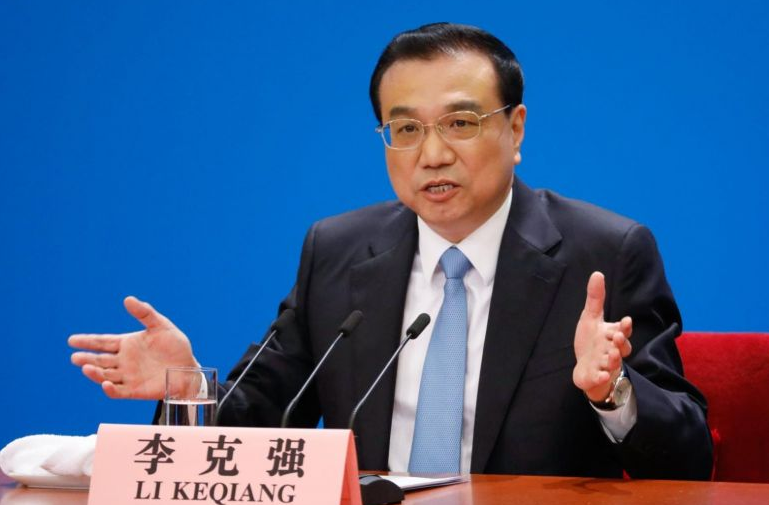“A comprehensive analysis of evolving dynamics at home and abroad indicates that this year our country will encounter many more risks and challenges, and we must keep pushing to overcome them,” said Premier Li Keqiang at the start of China’s annual meeting of parliament at the Great Hall of the People
China on Saturday targeted slower economic growth of around 5.5% this year as domestic headwinds, including a downturn in the country’s vast real estate sector and lacklustre consumption, cast a pall on the outlook for the world’s second-largest economy.
Gross domestic product grew 8.1% last year, its best showing in a decade and beating the government’s target of over 6%, helped by robust exports to economies hit by COVID-19 and due to a low statistical base in 2020, when the pandemic began to spread worldwide.
Yet, as economic conditions began to soften, the central bank has started cutting interest rates, local governments have expedited infrastructure spending and the finance ministry has pledged more tax cuts.
“A comprehensive analysis of evolving dynamics at home and abroad indicates that this year our country will encounter many more risks and challenges, and we must keep pushing to overcome them,” said Premier Li Keqiang at the start of China’s annual meeting of parliament at the Great Hall of the People.
“In our work this year, we must make economic stability our top priority and pursue progress while ensuring stability.”
Weighing on the economy is a property downturn triggered by a government campaign to control borrowing among highly indebted developers. An ensuing tightening in liquidity squeezed the sector and chilled buyer sentiment.
Sporadic COVID outbreaks last year across China and the arrival of the Delta and Omicron variants further erected roadblocks to growth, as tough anti-coronavirus measures hit the industrial and hospitality sectors.
China set its 2022 budget deficit target at around 2.8% of gross domestic product, Li said, compared with last year’s target of around 3.2% of GDP.
The consumer price index target was unchanged at around 3%. The quota for local government special bond issuance was set at 3.65 trillion yuan ($578 billion), also unchanged from 2021. ($1 = 6.3188 Chinese yuan renminbi).
Meanwhile,the condition of China’s winter wheat crop could be the “worst in history”, the agriculture minister said on Saturday, raising concerns about grain supplies in the world’s biggest wheat consumer.
Speaking to reporters on the sidelines of the country’s annual parliament meeting, Minister of Agriculture and Rural Affairs Tang Renjian said that rare heavy rainfall last year delayed the planting of about one-third of the normal wheat acreage.
A survey of the winter wheat crop taken before the start of winter found that the amount of first- and second-grade crop was down by more than 20 percentage points, Tang said.
“Not long ago we went to the grassroots to do a survey and many farming experts and technicians told us that crop conditions this year could be the worst in history,” he said. “This year’s grain production indeed faces huge difficulties.”
The minister’s comments underscore concerns about China’s grain supply at the same time as the war between Russia and Ukraine, which together account for about 29% of global wheat exports, has disrupted supplies causing wheat prices to surge to 14-year highs.
However, Tang is confident China can ensure a bumper harvest of summer grain thanks to strong policy and technical support and the improving crop condition for the grain.
Fuelled by the Ukraine crisis, wheat prices in China soared to a record this week on existing domestic supply worries.
Tang’s comments also come as Beijing has refocused on food security, a long-standing priority for the central leadership that has become increasingly prominent in policy since the COVID-19 pandemic began in early 2020.

